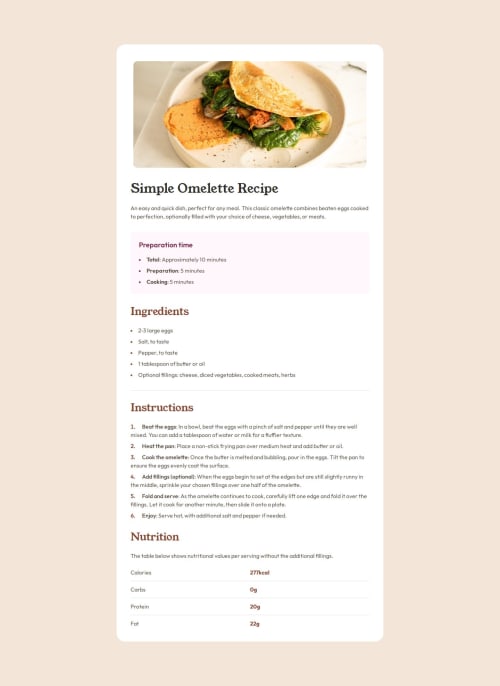Mobile-first design with Tailwind CSS

Solution retrospective
I use Tailwind CSS in this project for the first time, though I'm still not familiar with the workflow and the way to use it, I can tell that it would be easier to build consistent styles and layouts with Tailwind.
I would like to combine Tailwind and React, and see how components can work efficiently with these two frameworks.
What challenges did you encounter, and how did you overcome them?The transformation from original CSS properties to Tailwind CSS needs some time to get familiar with.
What specific areas of your project would you like help with?I would like to know the workflow of Tailwind with React, how do people start the project? Do they start with the html tags and then separate it into different components, or just simply start from the top of the webpage and make the components once encounter them?
Please log in to post a comment
Log in with GitHubCommunity feedback
- @evertzner
Hi, nice job!
What i do with tailwind/react projects is that first i create the components that I know I will use, let's say
Main.tsx,Card.tsxandButton.tsx. Then inside each component I write the html and dummy content that I need (for example, usingLorem Ipsumtext). Then after having all the content I need, I start with the tailwind implementation. Most of the times, I go from general to specific, in this case I do firstMainthenCardand lastButton. After finish this or in the meantime I also take a look if there is something that can be converted into another component. For example, let's say that insideCardI have a list of items, well in that case I move out the list and create a component callItems.Hope it helps somehow
Marked as helpful
Join our Discord community
Join thousands of Frontend Mentor community members taking the challenges, sharing resources, helping each other, and chatting about all things front-end!
Join our Discord